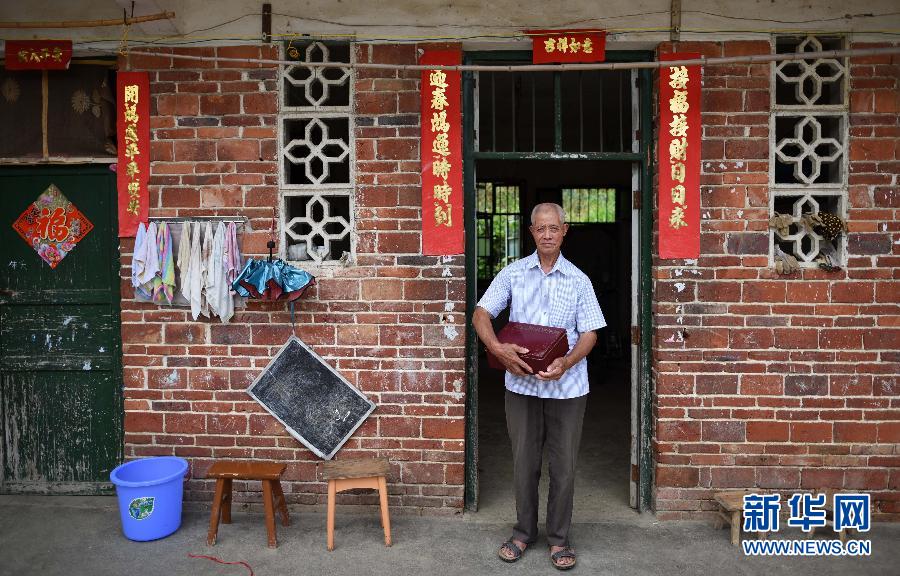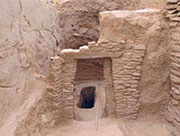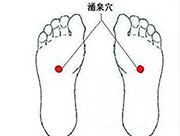

 |
| Zhu Xiuqing, 80, stands at the gate of his house in the new village where he now lives in, with the Zhu Family Pedigree in his hand. (Xinhua/Li Ga) |
Located in Nuanshui town, Rucheng County of south Hunan Province, the Beishui Village is an ancient village established in Ming dynasty, and the place used to be the local economic center. In the end of 1980s, many young people went out as migrant workers, and the permanent resident population of the village started to decrease. At the beginning of 1990s, due to the construction of a water conservancy project, many villagers moved to a newly-constructed village, and only the left-behind elders and children stayed in the village.
Zhu Xiuqing, 80, lived in the ancient village with his brothers for the greater part of their lives, and there were about 600 persons at most in the village during their childhood. Zhu Xiuqing’s five children are all working in other places and have settled down there, so he also has moved to the new village with his children. In Beishui Village, most families are the same as Zhu Xiuqing’s.
In 2014, the Chinese Village Culture Research Center of the Central South University executed an over 3-month investigation at 11 provinces in Yangtze River and Yellow River basins. The investigation group visited 1,033 traditional villages that existed in 2010, and the investigation has found out that 461 villages have vanished due to various reasons, and the rest 572 villages survived.
Currently, the local government is organizing relevant investigations, and revitalizes Beishui Village. It is planned to conduct tourism development in the ancient villages and create an eco-culture tourism area. Hu Binbin, director of the Chinese Village Culture Research Center said that the protection of ancient village is not merely the building repair and recovery. The most important thing is to keep the natives, and only the village with life can attract tourists and keep the nostalgia.
 |
Day|Week

 Stunning photos of air show in China’s V-Day parade
Stunning photos of air show in China’s V-Day parade Bikini models compete in oriental beauty pageant
Bikini models compete in oriental beauty pageant Archaeologists find 4,000-year-old sentry post in Shaanxi
Archaeologists find 4,000-year-old sentry post in Shaanxi Chinese couple claim title for Guinness world's tallest married couple
Chinese couple claim title for Guinness world's tallest married couple Left-behind child faces separation from father after summer vacation
Left-behind child faces separation from father after summer vacation Scenic Liangshan: Photographers' paradise
Scenic Liangshan: Photographers' paradise Amazing China-made flying car expected to serve in the army
Amazing China-made flying car expected to serve in the army Bikini boxing on opening day of a bar in Taiyuan
Bikini boxing on opening day of a bar in Taiyuan Have you met her? Campus belle from Wuhan University
Have you met her? Campus belle from Wuhan University Expert reveals top five longevity acupuncture points
Expert reveals top five longevity acupuncture points